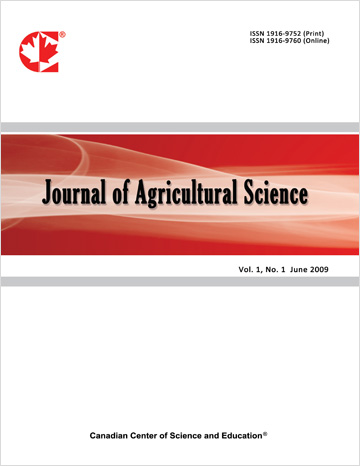Ecotype and Foliar Fertilization with Florovit Affect Herbage Yield and Quality of Greenhouse-Grown Basil (Ocimum basilicum L.)
- Joanna Majkowska-Gadomska
- Emilia Mikulewicz
- Artur Dobrowolski
- Anna Dziedzic
Abstract
Basil is usually grown in 0.5-0.7 dm3 pots, at 25 plants per pot. However, potted basil plants wilt and die easily due to high plant density, low substrate volume, insufficient moisture and nutrient depletion. The aim of this study was to determine the herbage yield and nutritional value of greenhouse-grown basil. A two-factorial experiment was performed in a randomized block design with three replications, in 2012-2013. A two-factorial experiment was performed in a randomized block design with three replications, in 2012-2013 Six basil (Ocimum basilicum L.) ecotypes were analyzed: sweet basil, ‘Queen of Siam’ basil, purple basil, cinnamon basil, lemon basil and ‘Minette’ basil. The second experimental factor was foliar fertilization with Florovit at a concentration of 0.5% and 1%. Basil yield was significantly affected by the ecotype and the interaction between the experimental factors. ‘Minette’ basil fertilized with 1% Florovit solution was characterized by the highest fresh herbage yield. A statistical analysis revealed that Florovit had no significant effect on basil yield. The concentrations of dry matter, total sugars, L-ascorbic acid and nitrates(V) in basil herbage varied across ecotypes. Foliar fertilization had a significant effect on the organic acid content of basil leaves. The accumulation of the analyzed components in basil herbage was significantly affected by the interaction between the experimental factors. Basil yield was significantly affected by the ecotype. ‘Minette’ and ‘Siam Queen’ basil was characterized by the highest fresh herbage yield. The fresh herbage of ‘Minette’ basil contained the lowest concentrations of dry matter, total sugars, L-ascorbic acid, organic acids and nitrates(V).
- Full Text:
 PDF
PDF
- DOI:10.5539/jas.v7n4p195
Journal Metrics
- h-index: 67
- i10-index: 839
- WJCI (2023): 0.884
- WJCI Impact Factor (2023): 0.196
Index
- AGRICOLA
- AGRIS
- BASE (Bielefeld Academic Search Engine)
- Berkeley Library
- CAB Abstracts
- ChronosHub
- CiteSeerx
- CNKI Scholar
- Copyright Clearance Center
- CrossRef
- DESY Publication Database
- DTU Library
- e-Library
- EBSCOhost
- EconPapers
- Elektronische Zeitschriftenbibliothek (EZB)
- EuroPub Database
- Excellence in Research for Australia (ERA)
- Google Scholar
- Harvard Library
- IDEAS
- iDiscover
- Jisc Library Hub Discover
- JournalTOCs
- KindCongress
- LIVIVO (ZB MED)
- LOCKSS
- Max Planck Institutes
- Mendeley
- MIAR
- Mir@bel
- NLM Catalog PubMed
- Norwegian Centre for Research Data (NSD)
- Open J-Gate
- OUCI
- PKP Open Archives Harvester
- Polska Bibliografia Naukowa
- Qualis/CAPES
- RefSeek
- RePEc
- ROAD
- ScienceOpen
- Scilit
- SCiNiTO
- Semantic Scholar
- SHERPA/RoMEO
- Southwest-German Union Catalogue
- Standard Periodical Directory
- Stanford Libraries
- SUDOC
- Swisscovery
- Technische Informationsbibliothek (TIB)
- Trove
- UCR Library
- Ulrich's
- UniCat
- Universe Digital Library
- WorldCat
- WRLC Catalog
- Zeitschriften Daten Bank (ZDB)
Contact
- Anne BrownEditorial Assistant
- jas@ccsenet.org
